Ear Piercing Chart Guide that you Want to Know
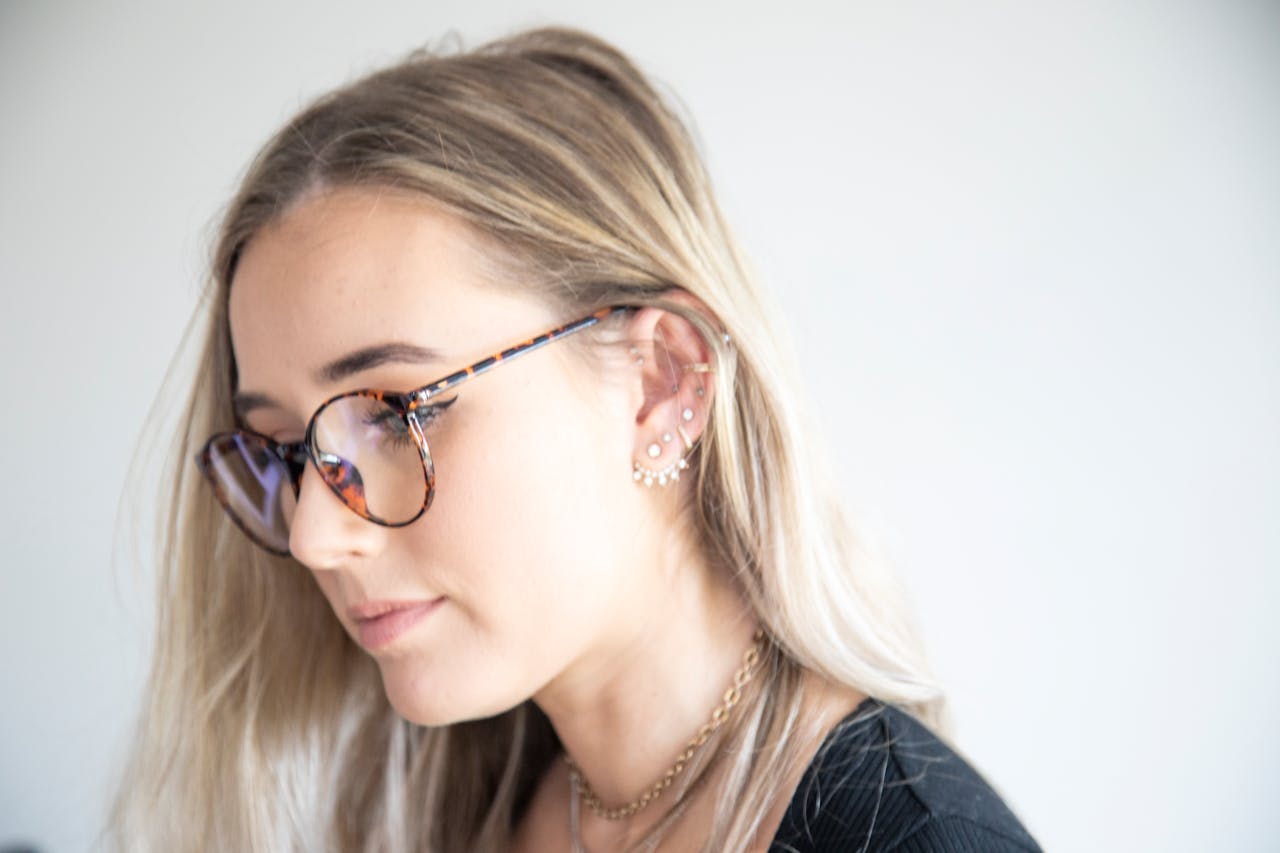
- Ear Piercing Types
- Let’s Dig More About Ear Piercing…
- 1. Ear Lobes Piercing
- 2. Helix Piercing
- 3. Tragus Piercing
- 4. Anti-tragus Piercing
- 5. Daith Piercing
- 6. Forward Helix Piercing
- 7. Conch Piercing
- 8. Snug Piercing
- 9. Rook Piercing
- 10. Orbital Piercing
- 11. Industrial Piercing
- 12. Contra Conch Piercing
- How To Handle An Ear-piercing Infection?
- Does Piercing Hurt?
- Aftercare: Healing And Cleaning
- Last Wordings
No matter your age or the number of piercings you already have, getting your ears pierced is an exciting experience. Although ear piercings have been part of human history for thousands of years, they have grown in popularity since the 1950s. Nowadays, earlobe piercing is not the only option. 14% of Americans have their earlobes pierced.
There are countless ways to wear earrings now that these piercings have inspired numerous trends. So, how do you choose the jewelry styles and piercings that suit your ears? We've put together a comprehensive guide to help you learn about the many types of ear piercings and everything you need to know before getting pierced!
Ear Piercing Types
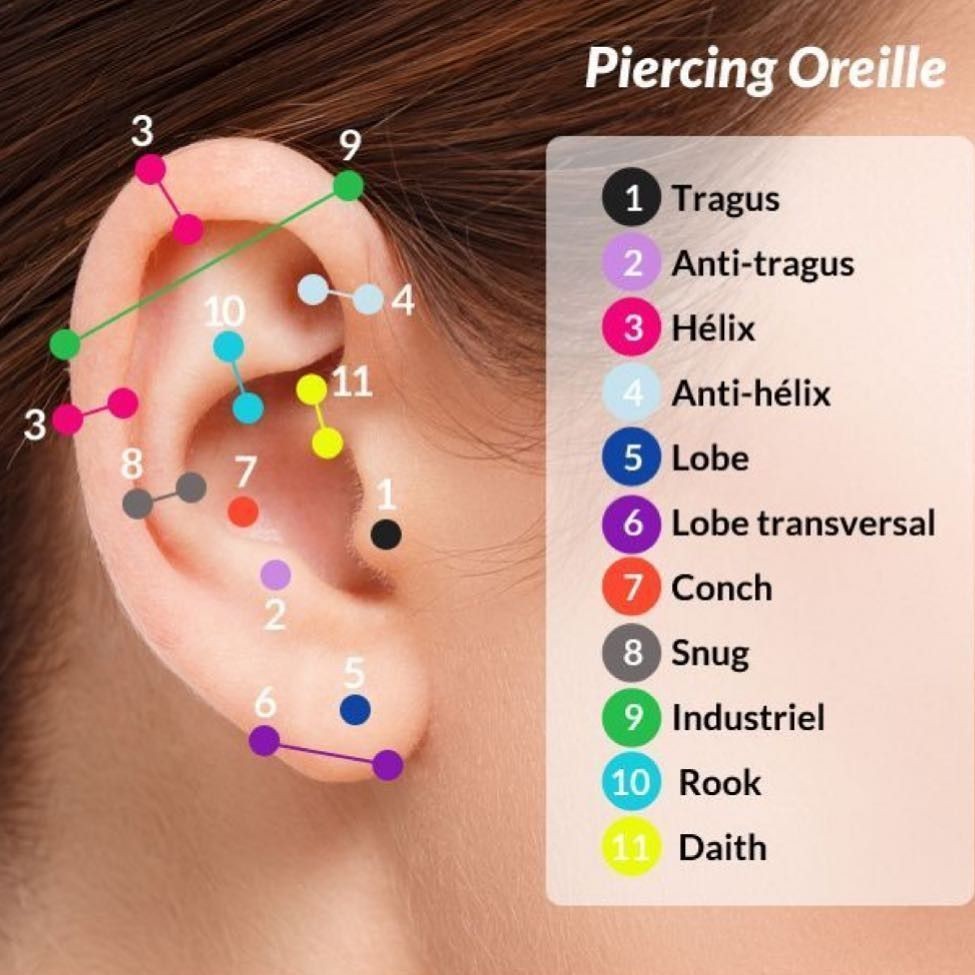
There are a wide variety of ear piercings available. The fleshy lower part near the base of the ear is a common place for people to get their ears pierced first. The helix in the cartilage of the upper ear and the conch in the middle ear is further possibilities. Ear piercings should only be done by a certified piercer using sterile tools and premium jewelry.
Let’s dig more about Ear Piercing…
1. Ear Lobes Piercing
The lobe, the area that is changed most often, is large enough to hold multiple piercings. Hoops, loop chains and other heavy earrings work well here. This is a quick piercing that causes less pain than other sites due to the fatty connective tissue of the lobe. It takes about two months to heal.
Level of pain: 1/5
Recovery period: 6–8 weeks
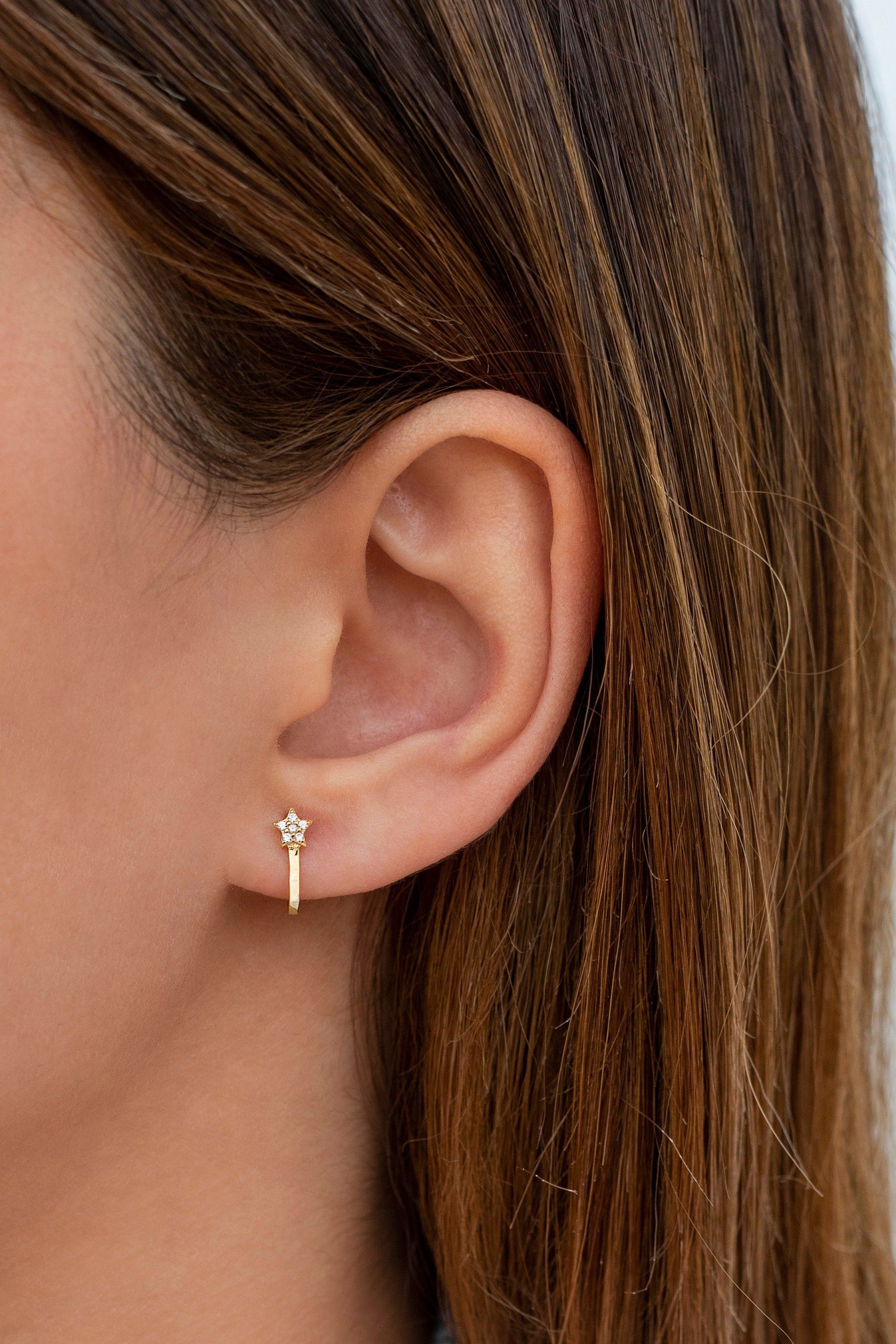
2. Helix Piercing
The external cartilage that surrounds the top of the ear and forms its frame is called the helix. A helix is also a large region like a lobe. Because it can accommodate many of your favorite flat back earrings as well as hoops with easy modifications, it has become a popular place to pierce. It takes at least three to six months to heal.
Level of pain: 3/5
Recovery period: 6–9 months
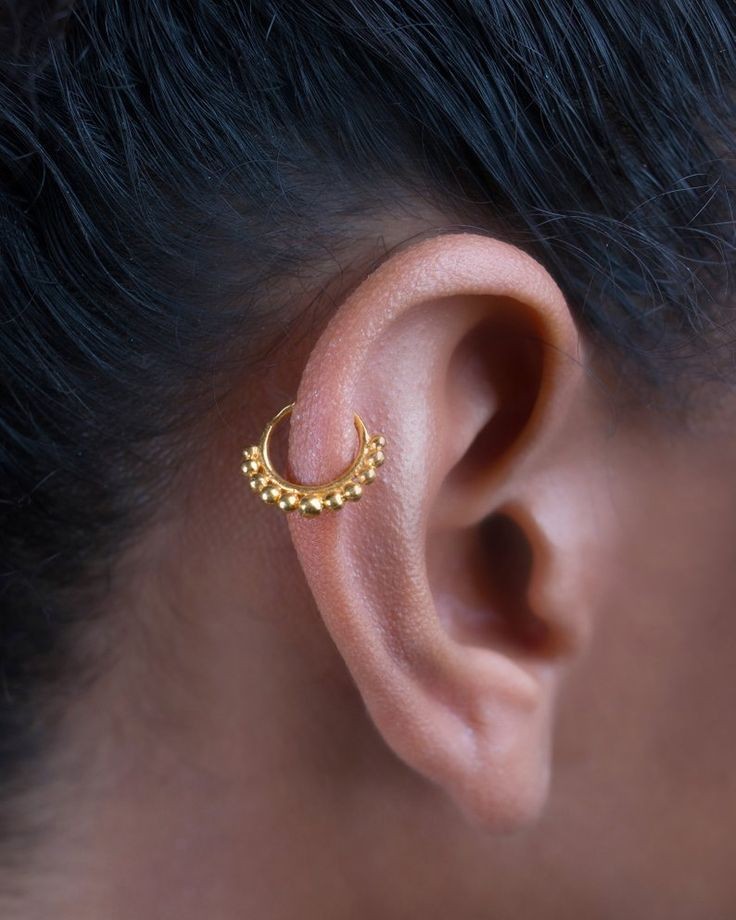
3. Tragus Piercing
The tragus, which may have an earlobe, is located at the top of the ear canal along with the anti-tragus. The tragus is an unusual place to pierce, and it provides a visual accent to your earlobe. This is a difficult place to pierce because the incision must be made at an awkward angle through the cartilage. However, showing off this unique earring is definitely worthwhile.
Level of pain: 3/5
Recovery period: 6–9 months
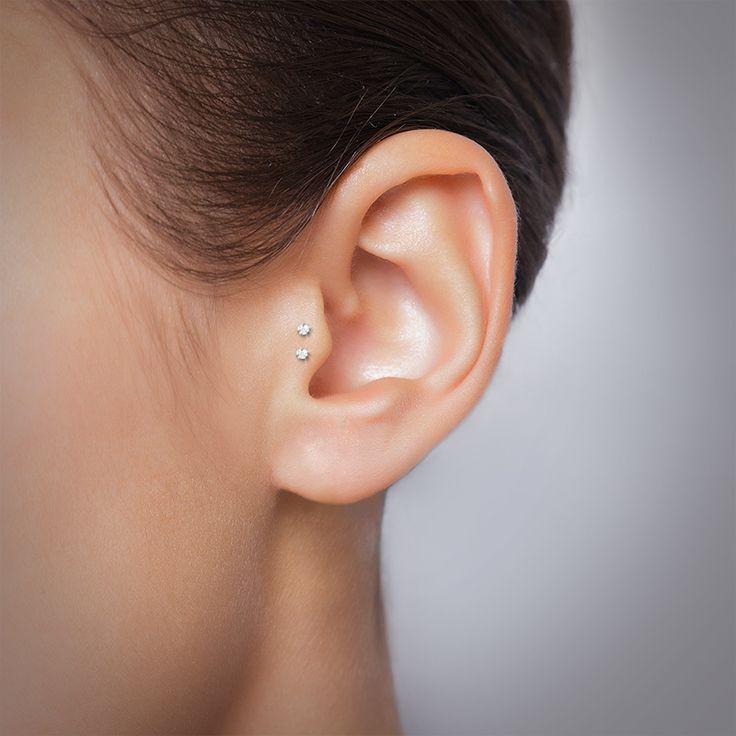
4. Anti-Tragus Piercing
You can add a little hoop or barbell to your collection with anti-tragus piercings. The smooth, folded strip of skin just above the earlobe and across the tragus is where the piercing is done. This is a sensitive area because it contains cartilage, which is a connective tissue that supports the parts of the bones that need to be flexible. It may take up to a year for the piercing site to heal completely. During this time, it may be sensitive and it may be difficult to sleep or use headphones.
Level of pain: 4/5
Recovery period: 9 months to 1 year
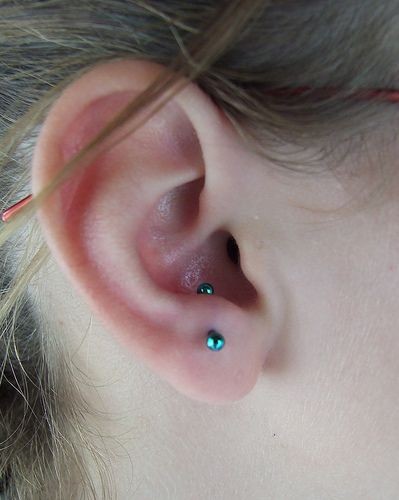
5. Daith Piercing
The hard layer in the center of the helix, called the daith, is made of the cartilage of the inner ear. Here, the daith features a single piercing, so your bold hoop takes center stage. Although it may take longer, the usual healing period is nine months.
Level of pain: 4/5
Recovery period: 6–9 months
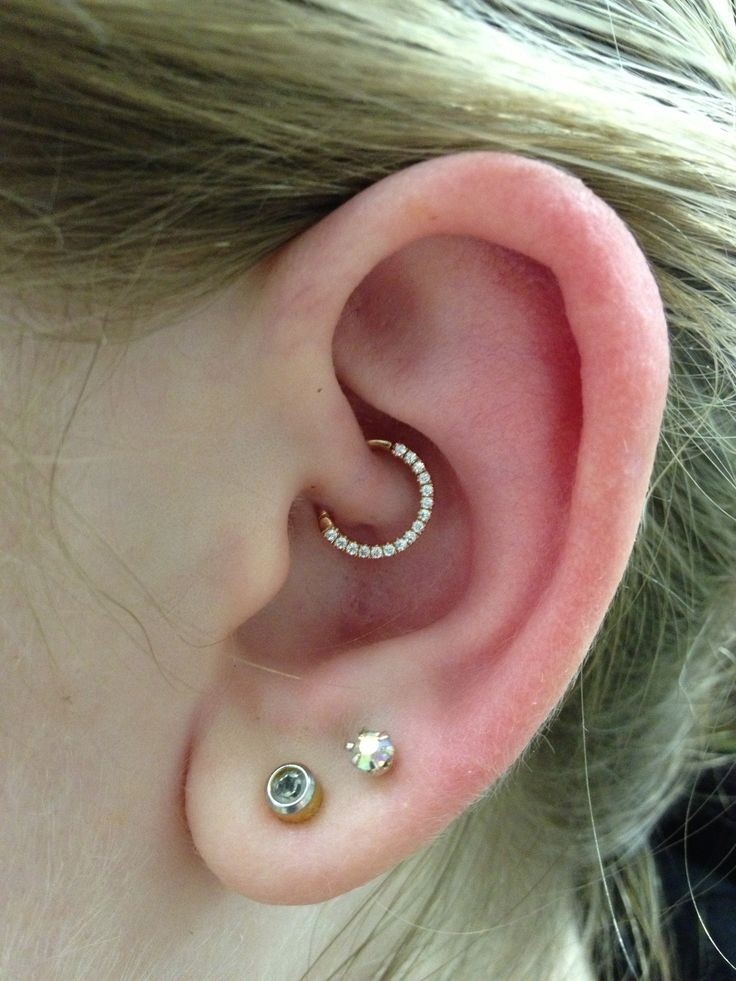
6. Forward Helix Piercing
Forward helix is the skin and cartilage of the upper part of the ear, directly above the tragus, form the forward helix, from which the helix begins. Because it can include two or even three earrings, the forward helix has grown in popularity as a multiple piercing site. It takes three to nine months to heal.
Level of pain: 4/5
Recovery period: 3–9 months
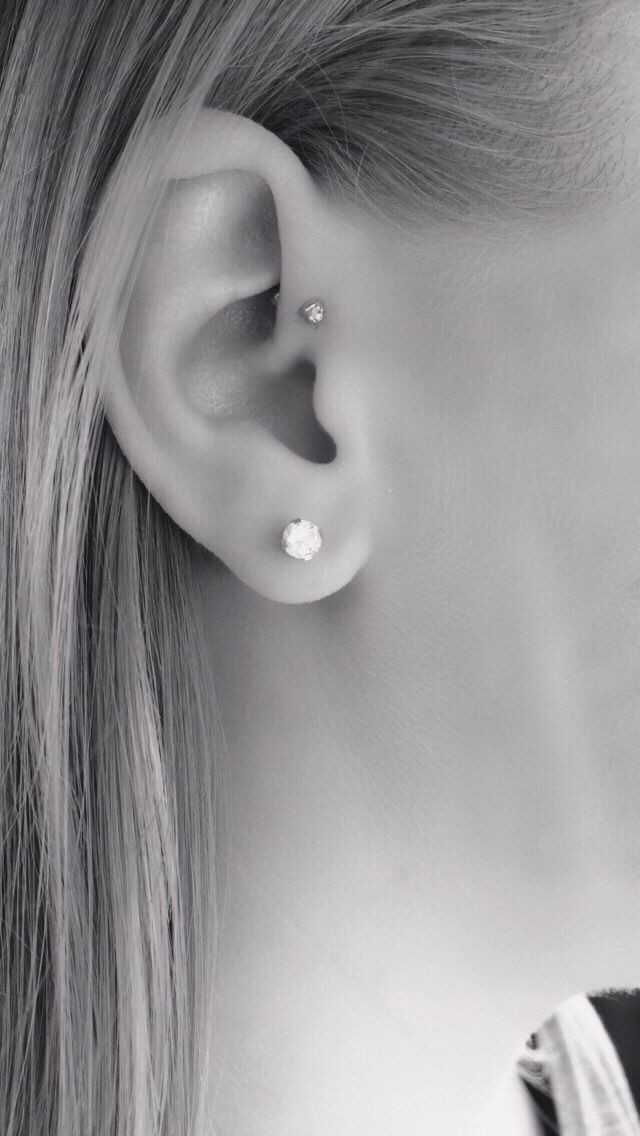
7. Conch Piercing
As its name implies, the conch, located in the middle of your ear, resembles a shell. Conch is a wonderful option for the adventurous as it offers a highly customizable space for specific studs and gemstone hoops. The cartilage in this area can make the conch piercing more sensitive. It takes six to nine months to heal.
Level of pain: 2/5
Recovery period: 6–9 months
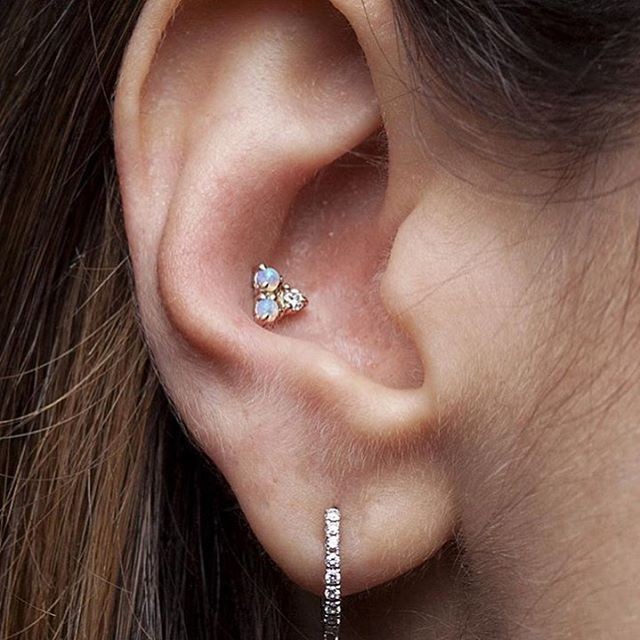
8. Snug Piercing
The snug can be reached by tracing the cartilage fold downward toward the outer ear. This piercing is usually worn with a 16-gram captive bead ring and is located halfway up the ear. After the piercing, jewelry can be replaced after two or three months, but healing can take up to six months.
Level of pain: 3/5
Recovery period: 4–6 months
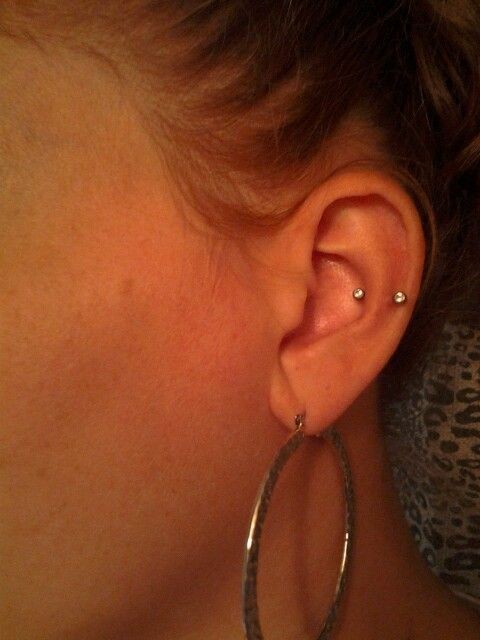
9. Rook Piercing
The rook, or cartilage fold that leads to the external conch, is located just above the daith. Typically, a curved jewelry object, such as a 16-gram bead ring or a curved barbell, is used to penetrate this layer of cartilage. After the piercing, jewelry can be replaced after two or three months, but healing can take up to ten months.
Level of pain: 5/5
Recovery period: 3–10 months
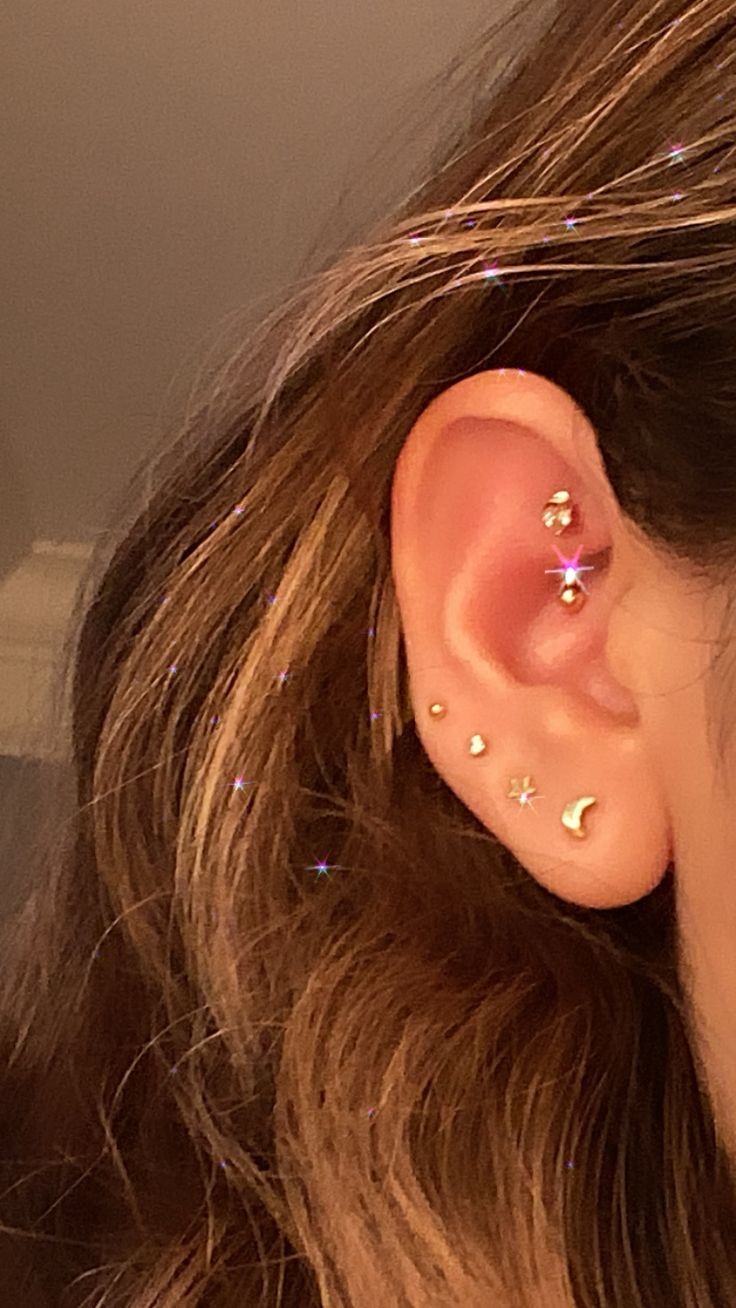
10. Orbital Piercing
The orbital opening is located directly above the upper ear lobe piercing. This is the starting point of the outer ear for cartilage. An orbital piercing is a special type because it connects two piercings with one piece of jewelry, usually a captive bead ring. Only one side of the hoop is visible because of the vertical holes in the cartilage. After piercing, jewelry can be replaced after two or three months, although the wound may not heal completely for up to a year.
Level of pain: 3/5
Recovery period: 3–12 months
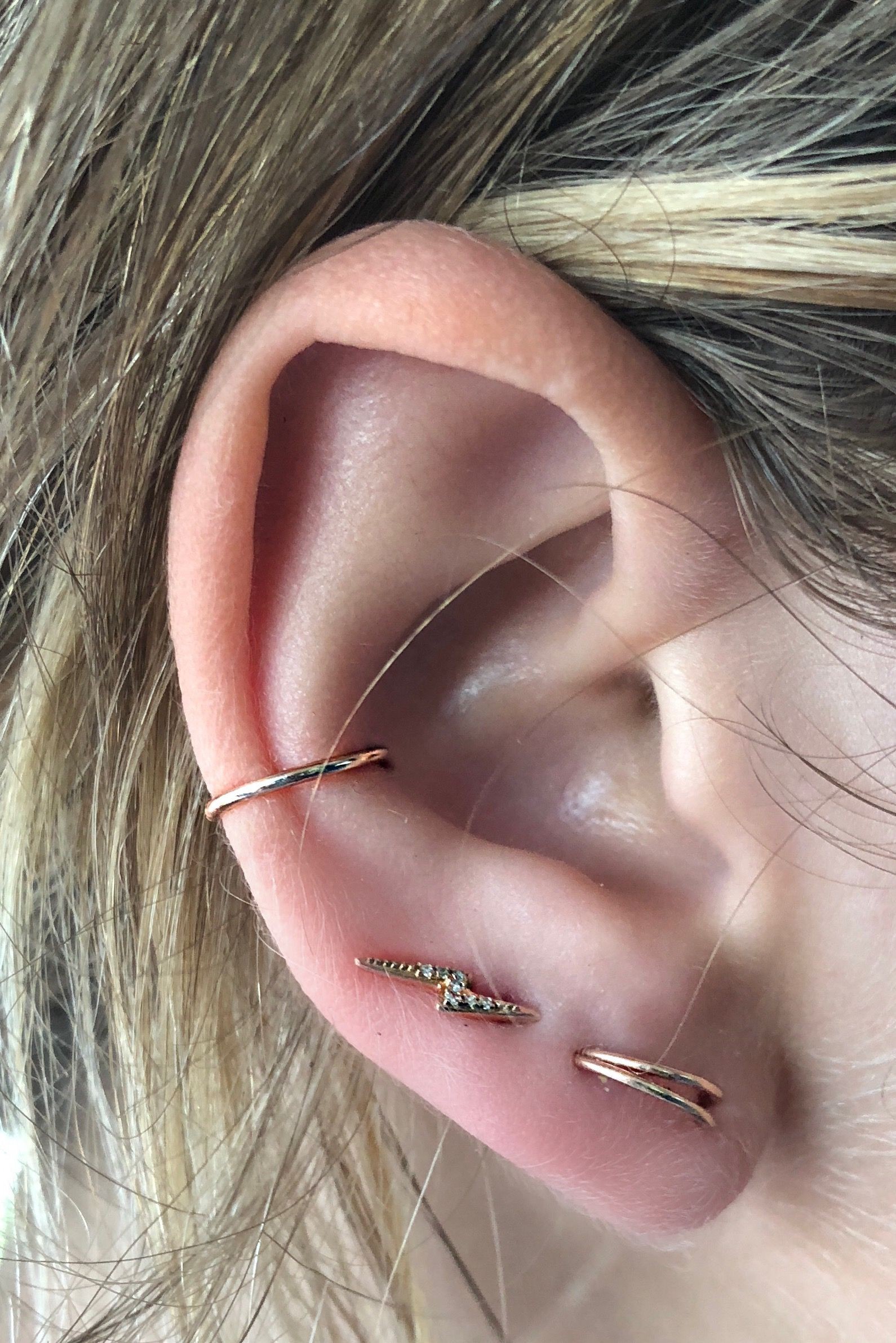
11. Industrial Piercing
To create a diagonal barbell that crosses the ear, two incisions are made: one through the inner cartilage flap and one through the outer. However, if there is a single, long, straight barbel connecting the two piercings, healing may take longer. When separate jewelry is used for piercings — either small straight barbells or captive bead rings — piercings usually heal more quickly. While it may be okay to replace the jewelry in two to four months, the piercing will likely be vulnerable for a year or more.
Level of pain: 5/5
Recovery period: 9 months to 1 year
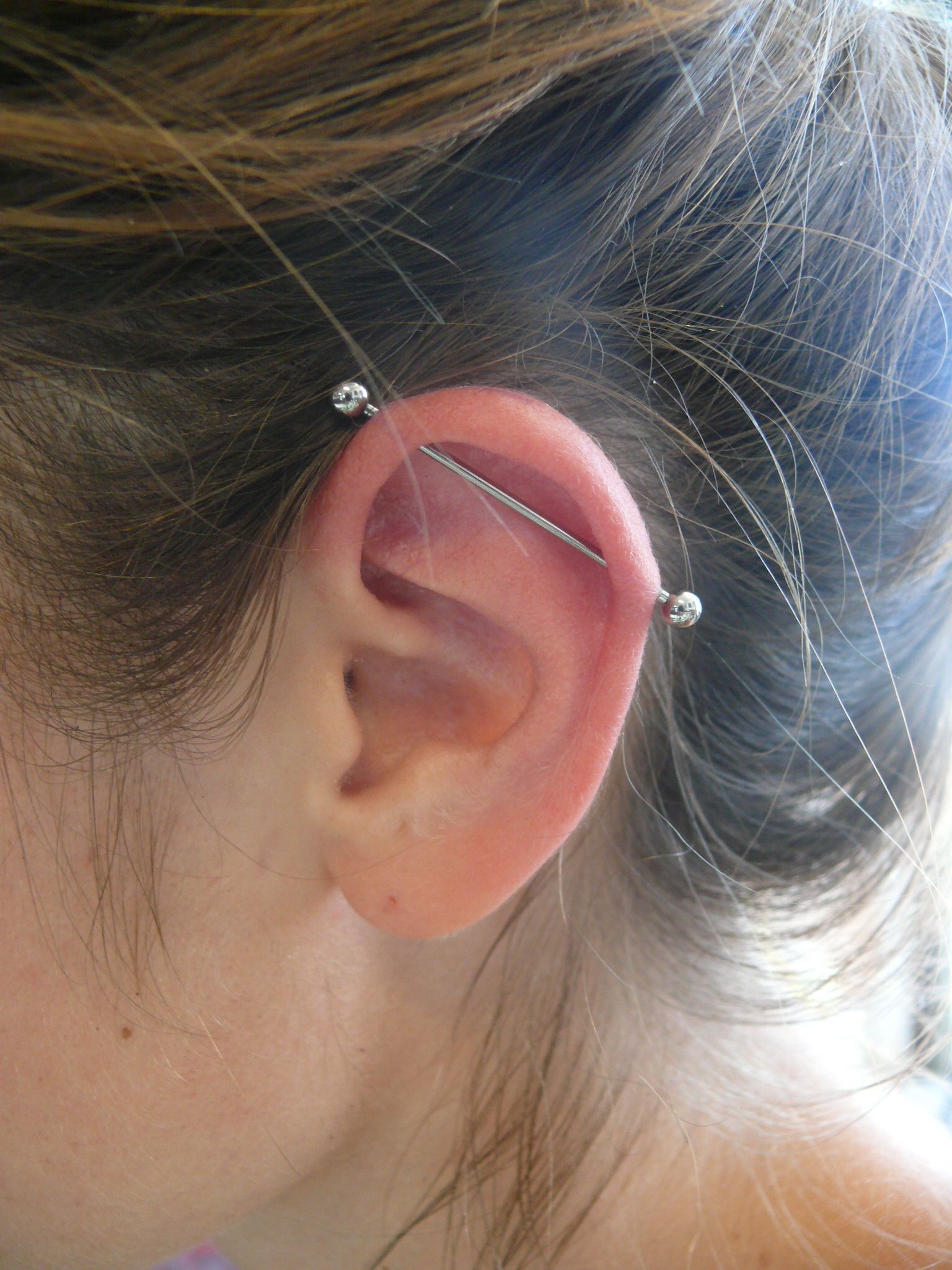
12. Contra conch Piercing
Which part of your ear is best for piercing depends largely on its exact structure. Some sections have more space than others. If you want to add some visual tension to your ear stack, the contra conch, also known as the outer conch, located above the conch, is a great place to wear hoop earrings high on the ear. It takes six to nine months to heal.
Level of pain: 3/5
Recovery period: 6–12 months
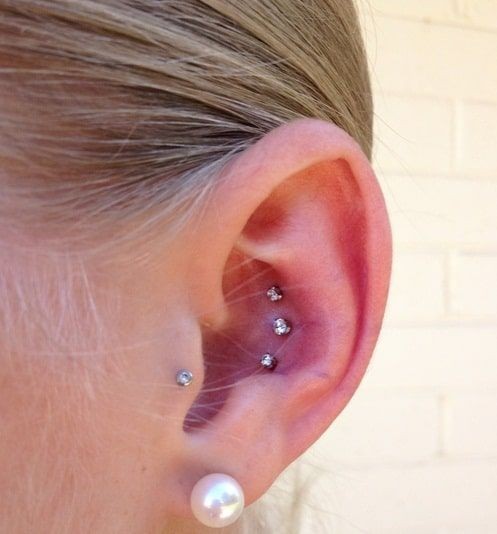
How to Handle an Ear-Piercing Infection?
Naturally, a piercing increases your risk of infection because it creates a kind of "wound." For this reason, it is important that it is finished before and in a sterile, professional setting.
To prevent infection in the piercing, proper care is also very important. Clean the pores twice a day, using a clean cotton bud and sterile saline or antibacterial solution. Use warm water to remove any crusted blood or discharge. However, avoid twisting it as this may enlarge the hole.
See a doctor or return to the piercer for advice if your piercing is infected if it's painful, swollen, or bleeding and repeated cleanings aren't helping. Although it is unusual for ear piercings to spread infection to other parts of the body, see a doctor if you have any concerns about your piercing.
Does Piercing Hurt?
The first and most important thing we all want to know is: Will it hurt me? Because this is so individual, it can be difficult to answer. Since everyone's pain threshold is different, something that hurts your friend may not cause you to cringe. You should, absolutely, expect some discomfort during the piercing process because, well, you're basically piercing your own skin (it'd be weird if you weren't).
Since the earlobe is generally considered the least painful piercing, cartilage piercings, such as in the helix, tragus, conch, and other areas, are usually more painful because cartilage is harder than other types of ear tissue.
Jewelry company La Mode has created a chart that ranks the pain for each type of ear piercing. If you're concerned about pain levels, take a look below to see which ear piercings most people find most painful:
Aftercare: Healing and Cleaning
It can be easy to forget about care and maintenance during the excitement of a new piercing. The instructions and saline solutions you need to start your care regimen are included in our aftercare package.
Cleaning your piercing twice a day with warm water and antibacterial soap or saline solution is part of regular care. Before piercing or changing a piercing, always wash your hands to keep it sterile and reduce the risk of infection. When wearing jewelry in a newly pierced area, try not to twist it as this can cause the area to stretch even more. Each site heals at a unique pace. Remember that even though a site looks fine from the outside, it may not be completely fine from the inside.
Using a cotton ball or swab dipped in saline solution, treat any blood, crusts or debris. To ease the discomfort, gently clean the hole with a swab and apply a warm compress.
Last Wordings
Not every piercing or piercing arrangement will suit your anatomy. It all depends on personal preference and the specific shape of your ear. If you're looking for something simple, lobe piercings are usually a fantastic place to start because they usually heal the fastest and cause the least amount of pain.
If you're willing to put up with the longer healing timeframes associated with earrings near the cartilage parts of your ears, consider getting a helix, conch, oracle, or other similar piercing.
